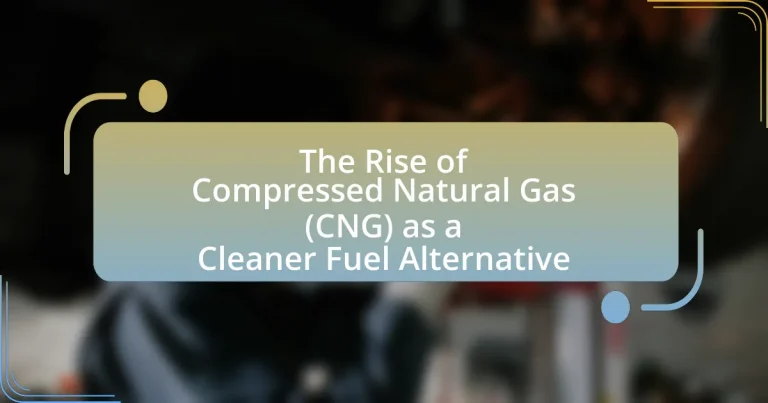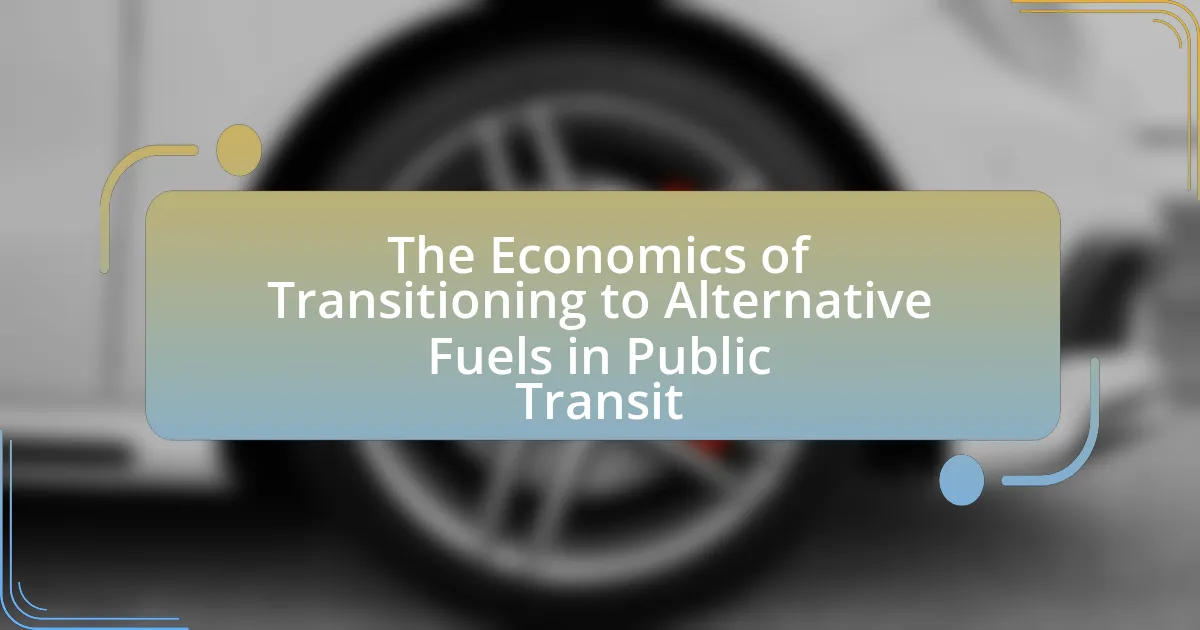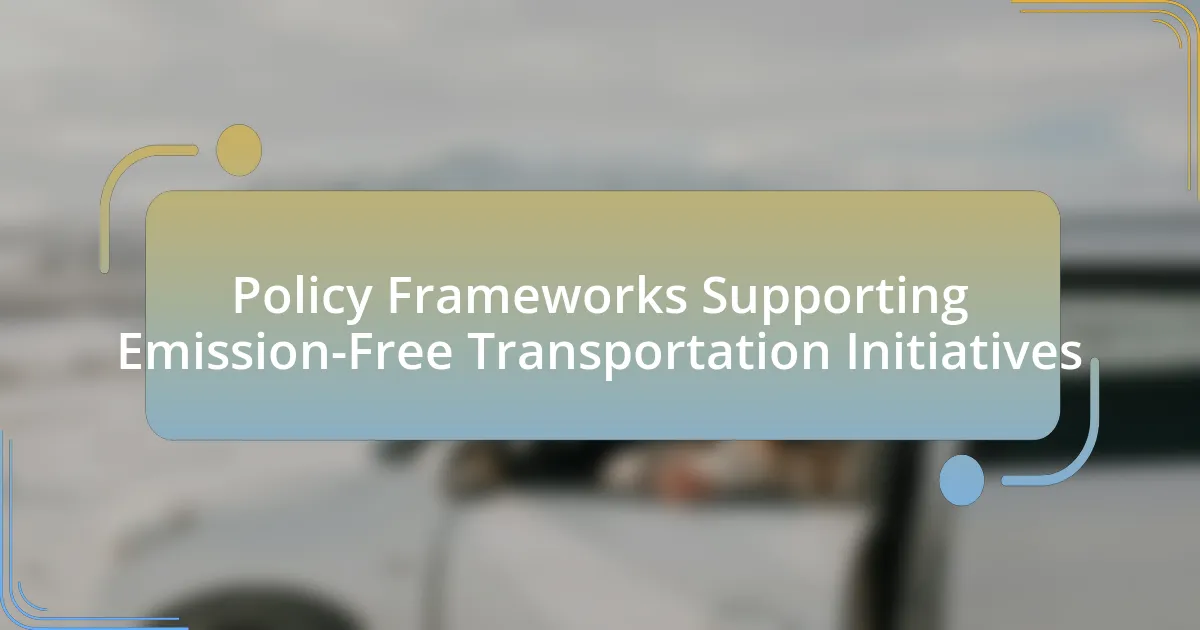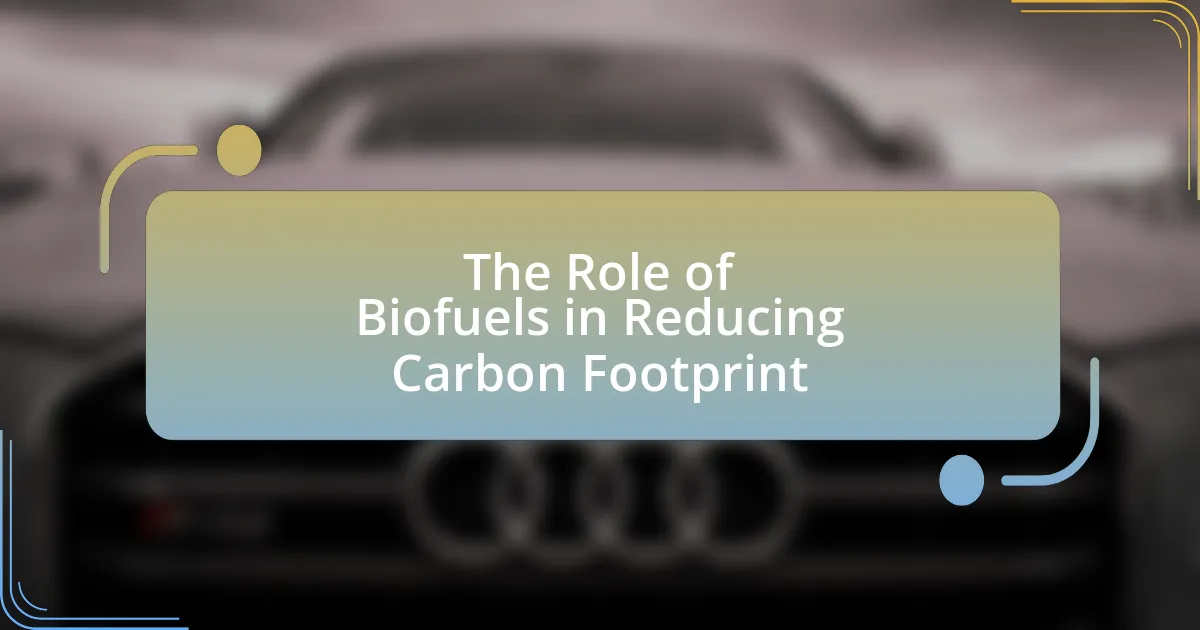Compressed Natural Gas (CNG) is a cleaner fuel alternative primarily composed of methane, stored at high pressure, and used in vehicles as a substitute for gasoline and diesel. The article explores the production and processing of CNG, highlighting its environmental benefits, including lower emissions of greenhouse gases and pollutants compared to traditional fossil fuels. It discusses the technological advancements that have facilitated CNG growth, the economic factors driving its adoption, and the challenges faced by the industry, such as infrastructure limitations and regulatory hurdles. Additionally, the article examines public perception and education’s role in promoting CNG usage, along with best practices for transitioning to this cleaner fuel option.
--Compressed-Natural-Gas-(CNG)-is-a-fuel-that-consists-primarily-1.webp)
What is Compressed Natural Gas (CNG)?
Compressed Natural Gas (CNG) is a fuel that consists primarily of methane, which is stored at high pressure. CNG is used as an alternative to gasoline, diesel, and propane, primarily in vehicles. The use of CNG as a fuel source is considered cleaner than traditional fossil fuels because it produces fewer pollutants and greenhouse gases when burned. According to the U.S. Department of Energy, CNG emits up to 30% less carbon dioxide than gasoline and significantly reduces emissions of nitrogen oxides and particulate matter.
How is CNG produced and processed?
Compressed Natural Gas (CNG) is produced by extracting natural gas from underground reservoirs, primarily composed of methane. The extraction process involves drilling wells into the earth to access the gas, which is then transported to processing facilities. At these facilities, the natural gas undergoes purification to remove impurities such as water, carbon dioxide, and sulfur compounds, ensuring that the gas meets quality standards for use as a fuel.
Once purified, the gas is compressed to high pressures, typically around 3,000 to 3,600 psi, to convert it into CNG, making it suitable for storage and transportation. This compression process significantly reduces the volume of the gas, allowing for efficient storage in cylinders for use in vehicles and other applications. The entire production and processing chain is essential for ensuring that CNG is a viable and cleaner alternative fuel, contributing to reduced emissions compared to traditional fossil fuels.
What are the key steps in the production of CNG?
The key steps in the production of Compressed Natural Gas (CNG) include extraction, processing, compression, and storage. First, natural gas is extracted from underground reservoirs through drilling. Next, the extracted gas undergoes processing to remove impurities such as water, carbon dioxide, and sulfur compounds, ensuring it meets quality standards. Following processing, the purified natural gas is compressed to high pressures, typically between 2,900 to 3,600 psi, to convert it into CNG. Finally, the compressed gas is stored in high-pressure cylinders for transportation and use in vehicles. These steps are essential for transforming raw natural gas into a cleaner fuel alternative, contributing to reduced emissions compared to traditional fuels.
What technologies are used in CNG processing?
CNG processing utilizes several key technologies, including compression, purification, and storage systems. Compression technology is essential for increasing the pressure of natural gas, allowing it to be stored and transported efficiently. Purification processes, such as amine treatment and molecular sieves, remove impurities like water, carbon dioxide, and hydrogen sulfide to ensure the gas meets quality standards. Storage technologies, including high-pressure cylinders and tanks, are crucial for safely holding compressed natural gas for distribution and use. These technologies collectively enable the effective processing and utilization of CNG as a cleaner fuel alternative.
What are the characteristics of CNG?
Compressed Natural Gas (CNG) is a clean-burning alternative fuel primarily composed of methane. Its characteristics include a high octane rating, which enhances engine performance, and lower emissions of harmful pollutants compared to gasoline and diesel, contributing to reduced air pollution. CNG is stored at high pressure, typically around 3,000 to 3,600 psi, making it efficient for transportation. Additionally, CNG is non-toxic and poses a lower risk of spills and environmental contamination. The energy content of CNG is approximately 130,000 BTU per gallon equivalent, making it a viable option for various applications, including public transportation and heavy-duty vehicles.
How does CNG compare to other fossil fuels?
Compressed Natural Gas (CNG) is considered a cleaner alternative to other fossil fuels such as gasoline, diesel, and coal. CNG produces significantly lower emissions of harmful pollutants, including nitrogen oxides and particulate matter, compared to these fuels. For instance, according to the U.S. Department of Energy, CNG emits about 30% less carbon dioxide than gasoline and 25% less than diesel when combusted. Additionally, CNG has a higher octane rating, which can lead to improved engine performance and efficiency. This combination of lower emissions and better efficiency positions CNG as a more environmentally friendly option among fossil fuels.
What are the physical and chemical properties of CNG?
Compressed Natural Gas (CNG) primarily consists of methane (CH4) and exhibits distinct physical and chemical properties. Physically, CNG is colorless, odorless, and non-toxic, with a density approximately 0.6 times that of air, making it lighter than air. It has a boiling point of around -162 degrees Celsius and is stored under high pressure, typically around 200-250 bar, in specialized cylinders. Chemically, CNG is a hydrocarbon fuel that combusts cleanly, producing primarily carbon dioxide and water vapor, with minimal emissions of nitrogen oxides and particulate matter. The high combustion efficiency of CNG, with a higher heating value of about 35 MJ/m³, further supports its use as a cleaner fuel alternative.
Why is CNG considered a cleaner fuel alternative?
CNG is considered a cleaner fuel alternative because it produces significantly lower emissions of harmful pollutants compared to traditional fossil fuels like gasoline and diesel. Specifically, CNG emits up to 90% less nitrogen oxides and 30% less carbon dioxide, contributing to improved air quality and reduced greenhouse gas effects. Additionally, CNG combustion results in negligible particulate matter emissions, which are a major contributor to respiratory issues and environmental degradation. These characteristics make CNG a more environmentally friendly option for transportation and energy generation.
What environmental benefits does CNG provide?
Compressed Natural Gas (CNG) provides significant environmental benefits, primarily by reducing greenhouse gas emissions and air pollutants. CNG emits up to 30% less carbon dioxide compared to gasoline and diesel, contributing to lower overall carbon footprints. Additionally, CNG combustion produces negligible particulate matter and lower levels of nitrogen oxides, which are major contributors to smog and respiratory issues. According to the U.S. Department of Energy, using CNG can lead to a reduction of up to 90% in harmful emissions compared to traditional fuels, making it a cleaner alternative for transportation and energy generation.
How does CNG reduce greenhouse gas emissions?
Compressed Natural Gas (CNG) reduces greenhouse gas emissions primarily by emitting lower levels of carbon dioxide and other pollutants compared to traditional fossil fuels like gasoline and diesel. Specifically, CNG produces about 20-30% less carbon dioxide per unit of energy when burned, which significantly lowers the overall greenhouse gas footprint of vehicles using this fuel. Additionally, CNG combustion results in minimal emissions of nitrogen oxides and particulate matter, further contributing to improved air quality and reduced environmental impact. Studies, such as those conducted by the U.S. Department of Energy, confirm that transitioning to CNG can lead to substantial reductions in greenhouse gas emissions, supporting its role as a cleaner fuel alternative.
-is-primar-2.webp)
What factors have contributed to the rise of CNG?
The rise of Compressed Natural Gas (CNG) is primarily attributed to its environmental benefits, cost-effectiveness, and advancements in technology. CNG produces significantly lower emissions of greenhouse gases and pollutants compared to traditional fuels, making it an attractive option for reducing air pollution. Additionally, the price of CNG has often been lower than gasoline and diesel, providing economic incentives for consumers and businesses. Technological improvements in extraction and distribution have also enhanced the accessibility and efficiency of CNG, further driving its adoption in various sectors, including transportation and energy generation.
How has the demand for cleaner fuels influenced CNG adoption?
The demand for cleaner fuels has significantly accelerated the adoption of Compressed Natural Gas (CNG) as an alternative energy source. This shift is primarily driven by increasing environmental regulations and public awareness regarding air quality and greenhouse gas emissions. For instance, CNG produces lower emissions of carbon dioxide, nitrogen oxides, and particulate matter compared to traditional gasoline and diesel fuels, making it a more environmentally friendly option. According to the U.S. Department of Energy, CNG can reduce greenhouse gas emissions by up to 30% compared to gasoline, further validating its role in the transition towards cleaner energy solutions.
What role do government policies play in promoting CNG?
Government policies play a crucial role in promoting compressed natural gas (CNG) by providing incentives, regulations, and infrastructure support. These policies often include tax credits for CNG vehicle purchases, grants for CNG fueling stations, and emissions regulations that favor cleaner fuels. For instance, the U.S. government has implemented the Alternative Fuel Vehicle (AFV) program, which encourages the adoption of CNG vehicles through financial incentives and grants. Additionally, policies aimed at reducing greenhouse gas emissions have led to increased investment in CNG infrastructure, making it more accessible to consumers. Such measures have been shown to significantly boost the market share of CNG as a cleaner fuel alternative, contributing to environmental sustainability and energy security.
How has public awareness impacted CNG usage?
Public awareness has significantly increased CNG usage by promoting its environmental benefits and cost-effectiveness. As more individuals and organizations become informed about the lower emissions associated with CNG compared to traditional fuels, demand for CNG vehicles and infrastructure has risen. For instance, a study by the U.S. Department of Energy indicated that public education campaigns about CNG’s advantages led to a 30% increase in CNG vehicle registrations in regions where such initiatives were implemented. This correlation demonstrates that heightened awareness directly influences consumer choices and policy support for CNG adoption.
What advancements in technology have facilitated CNG growth?
Advancements in technology that have facilitated the growth of compressed natural gas (CNG) include improvements in extraction methods, storage technology, and engine design. Enhanced hydraulic fracturing and horizontal drilling techniques have significantly increased the availability of natural gas, making it more accessible for CNG production. Additionally, advancements in high-pressure storage tanks have allowed for safer and more efficient transportation and storage of CNG. Furthermore, the development of dedicated CNG engines and retrofitting technologies has improved vehicle performance and reduced emissions, making CNG a more attractive alternative to traditional fuels. These technological innovations collectively support the expansion of CNG as a cleaner fuel option.
What innovations in CNG vehicles have emerged?
Recent innovations in CNG vehicles include advancements in engine technology, improved fuel storage systems, and enhanced emissions control mechanisms. Engine technology has evolved to incorporate high-pressure direct injection systems, which increase efficiency and power output while reducing emissions. Additionally, new composite materials for fuel tanks have made them lighter and more durable, allowing for greater storage capacity and range. Enhanced emissions control systems, such as advanced catalytic converters and onboard diagnostics, have further minimized pollutants, aligning with stricter environmental regulations. These innovations collectively contribute to the growing adoption of CNG as a cleaner fuel alternative in the automotive industry.
How have infrastructure developments supported CNG expansion?
Infrastructure developments have significantly supported the expansion of compressed natural gas (CNG) by enhancing the availability and accessibility of refueling stations. The establishment of a widespread network of CNG refueling stations has made it easier for consumers and businesses to adopt CNG vehicles, as evidenced by the increase in the number of stations from approximately 1,000 in 2000 to over 3,000 in 2023 in the United States alone. Additionally, investments in pipeline infrastructure have improved the distribution of natural gas, ensuring a reliable supply for CNG production. This infrastructure growth has facilitated the transition to CNG as a cleaner fuel alternative, contributing to reduced greenhouse gas emissions and promoting energy independence.
What economic factors are driving the rise of CNG?
The rise of Compressed Natural Gas (CNG) is primarily driven by its cost-effectiveness compared to traditional fuels. CNG prices are generally lower than gasoline and diesel, making it an attractive option for consumers and businesses looking to reduce fuel expenses. Additionally, the abundance of natural gas reserves has led to stable pricing, further enhancing its economic appeal. According to the U.S. Energy Information Administration, the average price of CNG is significantly lower than that of gasoline, which incentivizes its adoption in transportation and industrial sectors. Furthermore, government incentives and subsidies for CNG infrastructure development contribute to its growing market presence, as they lower the initial investment costs for consumers and companies transitioning to cleaner fuel alternatives.
How does the cost of CNG compare to traditional fuels?
The cost of compressed natural gas (CNG) is generally lower than that of traditional fuels such as gasoline and diesel. As of 2023, the average price of CNG in the United States is approximately $2.50 per gasoline gallon equivalent (GGE), while gasoline averages around $3.50 per gallon and diesel about $4.00 per gallon. This price difference makes CNG a more economical choice for consumers and businesses, contributing to its growing adoption as a cleaner fuel alternative.
What are the financial incentives for using CNG?
The financial incentives for using compressed natural gas (CNG) include lower fuel costs, tax credits, and reduced maintenance expenses. CNG typically costs less per gasoline gallon equivalent, often resulting in significant savings for consumers and businesses. For instance, the U.S. Department of Energy reports that CNG prices can be 30-50% lower than gasoline prices. Additionally, various federal and state tax incentives, such as the Alternative Fuel Tax Credit, can further reduce the overall cost of CNG vehicles. Furthermore, CNG engines generally require less maintenance than traditional gasoline engines, leading to lower long-term operational costs.

What are the challenges facing the CNG industry?
The challenges facing the CNG industry include infrastructure limitations, competition from alternative fuels, and regulatory hurdles. Infrastructure limitations arise from the insufficient number of refueling stations, which restricts the widespread adoption of CNG vehicles. Competition from alternative fuels, such as electric and hydrogen, poses a threat as these technologies gain traction and investment. Regulatory hurdles, including varying government policies and standards, can create uncertainty and impede growth in the CNG sector. These challenges collectively hinder the potential for CNG to become a dominant cleaner fuel alternative.
What infrastructure limitations exist for CNG distribution?
CNG distribution faces several infrastructure limitations, primarily including inadequate refueling stations, limited pipeline networks, and high costs associated with infrastructure development. The lack of sufficient refueling stations restricts access for consumers and fleets, making it less convenient compared to gasoline or diesel options. Additionally, the existing pipeline infrastructure is often insufficient to support widespread CNG distribution, particularly in rural or underserved areas. According to the U.S. Department of Energy, as of 2021, there were only about 1,800 public CNG stations in the United States, highlighting the scarcity of refueling options. Furthermore, the initial investment required for building CNG infrastructure can be prohibitively high, deterring potential investors and limiting expansion efforts.
How do refueling station availability and accessibility affect CNG use?
Refueling station availability and accessibility significantly influence the adoption and use of compressed natural gas (CNG) as a fuel. When refueling stations are plentiful and conveniently located, they reduce range anxiety for CNG vehicle owners, encouraging more drivers to choose CNG over traditional fuels. According to the U.S. Department of Energy, areas with higher densities of CNG stations see increased CNG vehicle registrations, demonstrating a direct correlation between station accessibility and fuel adoption rates. Conversely, limited station availability can deter potential users, as the inconvenience of refueling can outweigh the benefits of using a cleaner fuel alternative.
What are the challenges in maintaining CNG pipelines?
Maintaining CNG pipelines presents several challenges, including corrosion, leakage detection, and regulatory compliance. Corrosion can occur due to moisture and contaminants in the gas, leading to pipeline deterioration. Leakage detection is critical, as undetected leaks can pose safety hazards and environmental risks; advanced monitoring technologies are often required to identify these leaks promptly. Additionally, regulatory compliance involves adhering to stringent safety and environmental standards, which can vary by region and require ongoing inspections and maintenance efforts. These challenges necessitate a comprehensive maintenance strategy to ensure the integrity and safety of CNG pipeline systems.
What regulatory hurdles does the CNG industry face?
The CNG industry faces several regulatory hurdles, including stringent safety standards, environmental regulations, and infrastructure development challenges. Safety regulations require compliance with federal and state guidelines for the storage and transportation of compressed natural gas, which can be complex and costly. Environmental regulations often mandate emissions testing and compliance with air quality standards, impacting operational costs and feasibility. Additionally, the lack of adequate refueling infrastructure poses a significant barrier, as regulatory approvals for new stations can be slow and cumbersome, hindering market expansion. These factors collectively create a challenging regulatory landscape for the CNG industry.
How do safety regulations impact CNG operations?
Safety regulations significantly impact CNG operations by ensuring compliance with standards that minimize risks associated with the storage, transportation, and use of compressed natural gas. These regulations mandate regular inspections, maintenance protocols, and safety training for personnel, which collectively enhance operational safety and reduce the likelihood of accidents. For instance, the Pipeline and Hazardous Materials Safety Administration (PHMSA) enforces regulations that require operators to implement safety management systems, leading to a documented decrease in incidents related to CNG operations. Additionally, adherence to safety regulations fosters public confidence in CNG as a cleaner fuel alternative, thereby promoting its adoption and integration into energy systems.
What are the compliance challenges for CNG producers?
CNG producers face several compliance challenges, primarily related to environmental regulations, safety standards, and market dynamics. Environmental regulations require adherence to emissions standards set by agencies such as the Environmental Protection Agency (EPA), which can vary by region and may necessitate costly upgrades to facilities. Safety standards, governed by organizations like the Occupational Safety and Health Administration (OSHA), mandate stringent protocols for handling and transporting CNG, increasing operational complexity. Additionally, market dynamics, including fluctuating demand and competition from alternative fuels, can complicate compliance efforts as producers must adapt to changing regulations while maintaining profitability.
How does public perception influence CNG adoption?
Public perception significantly influences CNG adoption by shaping consumer attitudes and acceptance of the fuel. Positive perceptions, driven by awareness of CNG’s environmental benefits, such as lower emissions compared to gasoline and diesel, can lead to increased demand and investment in CNG infrastructure. For instance, a study by the U.S. Department of Energy found that public awareness campaigns highlighting CNG’s advantages resulted in a 30% increase in consumer interest in CNG vehicles. Conversely, negative perceptions, often stemming from misconceptions about safety or availability, can hinder adoption rates. Addressing these perceptions through education and outreach is crucial for promoting CNG as a viable alternative fuel.
What misconceptions exist about CNG as a fuel?
One misconception about CNG as a fuel is that it is not as efficient as gasoline or diesel. In reality, CNG has a higher octane rating, which allows for more efficient combustion and can lead to better fuel economy in certain engines. Additionally, some believe that CNG is not environmentally friendly; however, studies show that CNG produces significantly lower emissions of carbon dioxide, nitrogen oxides, and particulate matter compared to traditional fossil fuels. For instance, the U.S. Department of Energy reports that CNG can reduce greenhouse gas emissions by up to 30% compared to gasoline.
How can education improve public acceptance of CNG?
Education can improve public acceptance of CNG by increasing awareness of its environmental benefits and safety. Informative programs can highlight that CNG produces lower greenhouse gas emissions compared to gasoline and diesel, contributing to cleaner air quality. For instance, the U.S. Department of Energy states that CNG can reduce carbon dioxide emissions by up to 30% compared to gasoline. Additionally, educational initiatives can address misconceptions about CNG safety, emphasizing that it is non-toxic and has a high ignition temperature, making it safer than many other fuels. By providing factual information and real-world examples of successful CNG implementation, education can foster a more informed public that is supportive of CNG as a viable fuel alternative.
What are the best practices for transitioning to CNG?
The best practices for transitioning to Compressed Natural Gas (CNG) include conducting a thorough feasibility study, investing in proper infrastructure, training personnel, and ensuring compliance with safety regulations. A feasibility study assesses the economic and operational viability of CNG adoption, which is crucial for informed decision-making. Investing in infrastructure, such as CNG fueling stations and storage facilities, is essential to support the transition and ensure accessibility. Training personnel on CNG technology and safety protocols enhances operational efficiency and safety. Compliance with safety regulations, such as those set by the Department of Transportation and the Environmental Protection Agency, is necessary to mitigate risks associated with CNG use. These practices collectively facilitate a smooth and effective transition to CNG as a cleaner fuel alternative.
How can businesses effectively implement CNG solutions?
Businesses can effectively implement CNG solutions by conducting a thorough feasibility study to assess infrastructure needs, costs, and potential savings. This involves evaluating existing fuel systems, identifying suitable CNG suppliers, and ensuring compliance with local regulations. For instance, a study by the U.S. Department of Energy indicates that transitioning to CNG can reduce fuel costs by up to 30% compared to diesel, making it a financially viable option. Additionally, businesses should invest in training for staff on CNG technology and safety protocols to ensure smooth operations.
What tips can consumers follow when considering CNG vehicles?
Consumers considering CNG vehicles should evaluate the availability of CNG fueling stations in their area, as accessibility is crucial for convenience and practicality. Research indicates that the number of CNG stations has been increasing, with over 1,800 stations available in the United States as of 2023, making it essential for consumers to ensure they can refuel easily. Additionally, consumers should assess the total cost of ownership, including purchase price, maintenance, and fuel costs, as CNG vehicles often have lower fuel costs compared to gasoline or diesel. Furthermore, consumers should consider the environmental benefits, as CNG produces fewer emissions than traditional fuels, contributing to reduced air pollution. Lastly, consumers should investigate the vehicle options available, as various manufacturers now offer CNG models, providing choices that meet different needs and preferences.
It is not possible to provide an answer to the question “
” as it does not contain a specific inquiry or context to address.





